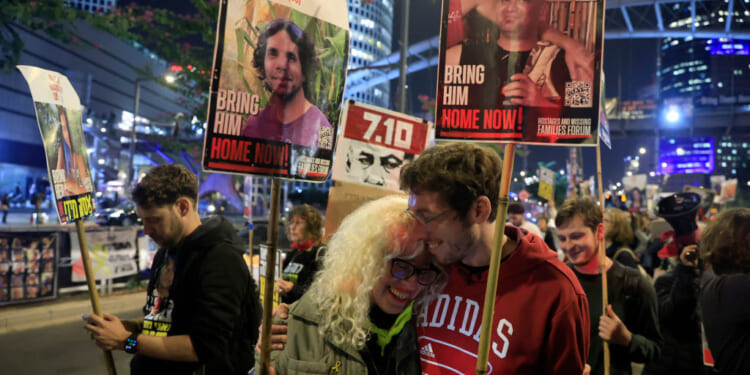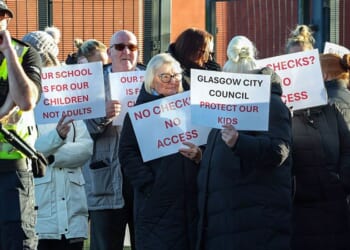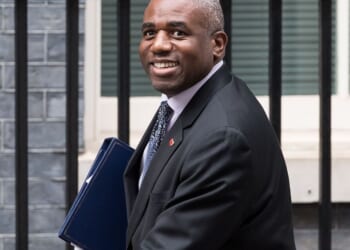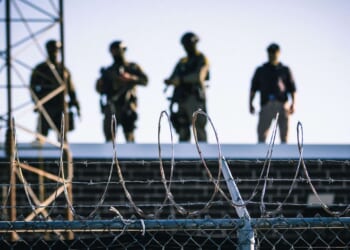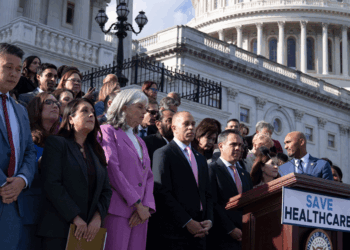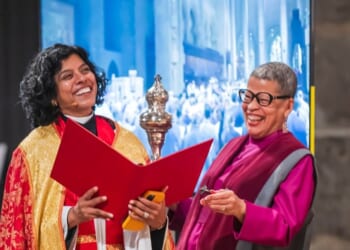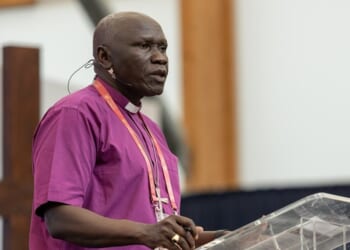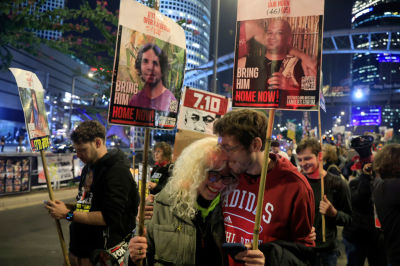
As I reflect on this week’s headlines, a familiar mix of cautious hope and unshakeable conviction, rooted in God’s unchanging Word, stirs within me. For those of us who have traded an ideology of fear for the liberating truth of Christ, such moments resonate deeply.
Having spent two decades immersed in national security, chasing shadows of radicalism as a devout Muslim, I now speak from a place of redemption. I’ve exchanged Sharia’s legalism for grace’s freedom, learning that true peace isn’t found in diplomatic agreements but anchored in the sovereignty of a God who orchestrates history.
The news from the Middle East in October 2025 is momentous. After two grueling years of war and immense loss, Israel and Hamas have signed a “landmark peace deal,” brokered by President Donald Trump, which was outlined during his address to the Knesset. The initial phase includes the release of the remaining 20 Israeli hostages from Gaza, over 2,000 Palestinian prisoners, and the reopening of five border crossings for humanitarian aid. Trucks are already lining up, and Israeli forces are withdrawing from northern Gaza, allowing displaced Gazans to return to their homes.
Egypt, Qatar, and Turkey have endorsed the ceasefire, seeing it as a step toward regional transformation. Trump, quoting Jesus, declared, “Blessed are the peacemakers,” to cautious applause in Jerusalem. Reactions on social media are divisive, with some calling it a miracle and others a naive concession to terrorists. Hillary Clinton even offered rare praise for the negotiations.
From a human perspective, there’s much to celebrate: hostages returning home, families reunited, and the potential for an end to a bloody chapter in Israeli-Palestinian history. Whispers of economic reconstruction and normalized relations are spreading across the Arab world. Having once viewed the world through the lens of jihadist threats, I understand the exhaustion of endless conflict. I’ve worked in 37 countries in search of an elusive peace.
However, this isn’t peace born of repentance; it’s a hudna, a temporary truce rooted in Islamic doctrine. Islamic leaders are permitted to make peace with non-Muslims when weakened, to regroup and strike later. This aligns perilously with Ezekiel 38, which foretells an invasion during a deceptive period of security, not amidst war.
Let’s delve into Ezekiel 38, where God reveals the end-times scenario. “Son of man, prophesy against Gog, of the land of Magog, the chief prince of Meshech and Tubal” (v. 2). This Gog — representing a malevolent coalition including Persia (Iran), Cush (Sudan/Ethiopia), Put (Libya), Gomer, and Togarmah (Turkey) — attacks Israel when it “dwells safely, all of them dwelling without walls, and having neither bars nor gates” (v. 11). Imagine a regathered Israel, recovering from war, lulled by accords and alliances, spiritually unwalled. “In the latter years you will come into the land of those brought back from the sword and gathered from many people on the mountains of Israel,” God declares (v. 8). These mountains of Israel, reborn since 1948, now embrace pacts that could erode their defenses.
This Gaza deal is a prime example. The Abraham Accords have led to numerous normalizations, and this ceasefire promises to bring permanence. Trump envisions a glittering rebuild of Gaza under Arab auspices. However, closer examination uncovers substantial compromises.
America, eager for the deal, supplies Turkey — under Erdogan’s Islamist influence — with F-35 stealth fighters, upgraded F-16s, unrestricted humanitarian aid to Gaza, and the lifting of sanctions. Turkey, remember, hosts Hamas operatives and has ties to the Muslim Brotherhood. Then there’s Qatar, a gas-rich emirate that has bankrolled Hamas for hundreds of millions annually, now gifted a sprawling F-15QA training detachment at Mountain Home Air Force Base in Idaho. This includes 36 F-15 jets for $12 billion, a $500 billion investment pledge in U.S. tech and AI, and dedicated barracks for Qatari airmen on American soil. While not a sovereign outpost (15 NATO allies, including Turkey, have similar rotational pilot training programs), this compromise affects the American homeland, inviting the “fox into the henhouse.” It undermines America’s ability to label the Brotherhood a terror organization and blinds us to the enemy within.
These are not minor details; they are significant fractures. The deal avoids Hamas’s full disarmament, leaving governance as a vague “internal Palestinian matter.” Hamas, PIJ, and PFLP’s joint October 10 statement, published by MEMRI, declares their vow “to continue with the resistance in all its forms” until occupation crumbles, Jerusalem is theirs, and no “foreign guardianship” interferes in Gaza. They ridicule Trump’s blueprint, thanking Yemen’s Houthis, Lebanon’s Hezbollah, Iran’s ayatollahs, and Iraq’s militias — their Shiite proxies — for “martyrs on the path to Al-Aqsa.”
This peace deal with Sunni Arabs is a strategy to prevent Shiite dominance. Palestinians are predominantly Sunni. Historically, Hamas’s patrons, Saudi Arabia, Qatar, and Turkey, have strategically repositioned it as “Iran-backed” to remove Tehran’s influence and rebrand the group under their soft-power umbrella. Mohammad Nazzal, a Hamas politburo heavyweight, affirmed on UAE’s Al-Mashhad TV that weapons are non-negotiable and leaders will not flee Gaza. Their creed is “Victory or martyrdom.” Netanyahu’s withdrawal was contingent on disarmament, a notion Nazzal scoffs at, vowing an eternal fight.
This hudna, an Islamic stratagem for tactical pauses, is etched in history, from Muhammad’s Treaty of Hudaybiyyah to the PLO’s Oslo feints. Weakened by IDF strikes, Hamas licks its wounds, redeploys internal security forces, and eyes rebranding — perhaps as a “political” entity with a new name, while tunnels are refilled with rockets. This is all part of Islam’s second wave of conquest, not with swords, but through cultural creep, political infiltration, and soft power seeping through investments and air bases. The Bushes perfected this approach; Trump is simply reenacting it. I witnessed it in U.S. government halls, officials, with eyes wide shut, courting these players, ignoring the enemy’s name whispered in the Arab halls of power.
This hits close to home for me. During my time working in national security, I saw how peace overtures often masked rearmament — ceasefires becoming cover for rocket stockpiles and tunnel networks. The 1993 Oslo Accords promised a two-state solution but led to the Second Intifada’s suicide bombings. The 2005 Gaza disengagement paved the way for Hamas’s 2007 takeover and the October 2023 horrors that ignited this war. Each “peace” is a stepping stone to slaughter. But praise God, He opened my eyes to the truth in John 8:32: “You shall know the truth, and the truth shall make you free.” Now, I see these cycles not as geopolitical accidents, but as signposts on the road to Armageddon.
Ezekiel 38 is not just ancient poetry; it’s a divine blueprint for the end times, corroborated across Scripture. Jesus Himself alluded to these days in Matthew 24:6-8, warning of “wars and rumors of wars” as the beginning of birth pains. The Apostle Paul echoes it in 1 Thessalonians 5:3: “For when they say, ‘Peace and safety!’ then sudden destruction comes upon them, as labor pains upon a pregnant woman.”
“Peace and safety” — does that sound familiar? It’s the siren song of our headlines. Yet the chapter’s climax isn’t despair; it’s deliverance. God thunders from the heavens: “I will bring you against My land … so that the nations may know that I am the Lord” (Ezekiel 38:16). Fire and hail, earthquakes and pestilence — divine interventions that leave no doubt: Israel’s defender is not the Iron Dome or F-35s, but the God of Abraham, Isaac, and Jacob.
As believers, this prophecy calls us to a fearless posture, not fear-mongering. In my podcast, “Living Fearless Devotional,” I often remind listeners: Fear is a liar, but faith is the anchor. We don’t cower before our enemies; we stand on the promise of Romans 8:37: “In all these things we are more than conquerors through Him who loved us.”
This temporary truce in Gaza can be seen as a mercy from God, a temporary respite for people in the region, but also a window for the Gospel to flood the area. Remember the Afghans hearing of Christ’s love amid their chaos — now extend that to Gazans returning home, or Israelis rebuilding with renewed hope. But we must proclaim truth unapologetically. To my Jewish brothers and sisters: Your security isn’t in borders or brokers, but in the Messiah who wept over Jerusalem (Luke 19:41). To Palestinians ensnared by Hamas’s lies: True liberation isn’t in rockets, but in the Prince of Peace who offers eternal shalom.
So, what now? First, pray without ceasing (1 Thessalonians 5:17). Intercede for Netanyahu’s resolve, for Hamas’s dismantlement, and wisdom for President Trump. As Proverbs 21:1 reminds us that “the king’s heart is in the hand of the Lord.” Second, live fearlessly in the public square. Our faith is not private; it’s the light that exposes darkness (Matthew 5:16). Speak out against antisemitism, call out radical Islam’s peace-rejecting theology, and affirm Israel’s biblical right to the land. Third, share the Gospel boldly. In a world chasing fleeting accords, point to the cross — the ultimate peace treaty signed in Christ’s blood.
This Gaza ceasefire is a chapter, not the epilogue. The peace of the world is temporary; the peace of Christ endures forever. May we, like the peacemakers He blesses, pursue it with eyes fixed on eternity.
Hedieh Mirahmadi was a devout Muslim for two decades working in the field of national security before she experienced the redemptive power of Jesus Christ. She dedicates herself full-time to Resurrect Ministry, an online resource that harnesses the power of the Internet to make salvation through Christ available to people of all nations, and her podcast LivingFearlessDevotional.com. She is the author of the International Bestselling book“Living Fearless in Christ-Why I left Islam to Win Battles for the Kingdom.”

